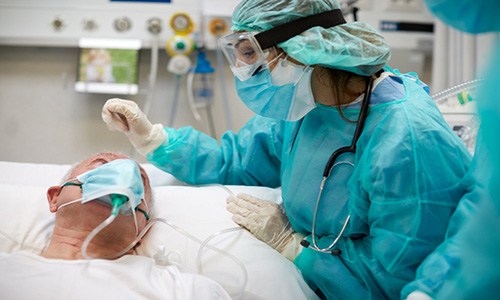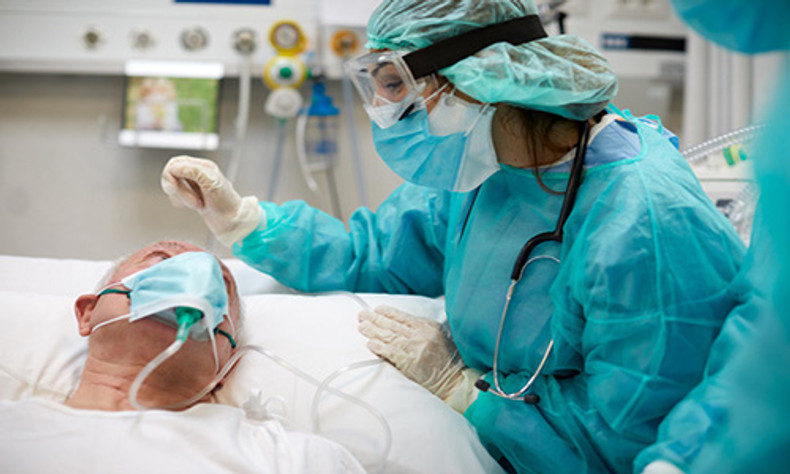
As sterile processing (SP) continually evolves by adopting new techniques and products, its primary focus remains on staying updated regarding ongoing outbreaks in its local communities. Even in the wake of the initial post-COVID pandemic adjustments, this phase prompted a thorough reevaluation of protocols to mitigate further the risks posed by infectious bacteria.
The core objective of SP remains the prevention of cross-contamination, ensuring the safety of colleagues, and, naturally, upholding the well-being of patients. With a heightened alertness toward current and potential bacterial developments, the department continues to be vigilant about infectious diseases they've been educated about and have prior experience with, such as CJD.
This article will present effective strategies provided by Bioseal, Inc. addressing the challenges posed by CJD, which impact both SP team members and surgical patients. These solutions are designed to minimize patient vulnerability to cross-contamination, alleviate workload pressures, and enhance safety protocols within the surgical and sterile processing departments.
What are CJD and Prions?
CJD, or "Creutzfeldt-Jakob Disease," is a rare and progressive brain disorder that affects humans. It falls within the category of prion diseases, which arise from the accumulation of abnormal prion proteins in the brain. Prions are unconventional protein forms responsible for certain neurodegenerative conditions in both humans and animals. Unlike typical infectious agents like viruses or bacteria, prions lack genetic material such as DNA or RNA. Instead, they are misfolded proteins capable of triggering the same abnormal conformation in other proteins, leading to a chain reaction of misfolding in the brain or nervous system. This results in protein aggregation and buildup, causing damage to brain tissue and the development of neurodegenerative diseases.
How do they affect SP and Patients?
Prion diseases pose unique challenges due to the resistance of misfolded prion proteins to conventional sterilization and decontamination methods. This resilience complicates the elimination of transmission risks. Additionally, prion diseases tend to exhibit rapid progression and severe neurological symptoms, often resulting in substantial disability and eventual fatality.
Given the inherent risks associated with CJD, Bioseal has developed CJD kits tailored for SP. These kits are designed to address the intricate procedures involved in reprocessing instruments exposed to this prion. In scenarios where departments might choose to dispose of instruments after exposure due to extensive reprocessing steps and replacement costs, Bioseal's CJD kits offer a sterile and disposable solution.
What Makes CJD Kits Essential for Patient Safety?
In the realm of patient safety, CJD Kits offered by Bioseal play a pivotal role. These kits are a strategic solution designed to mitigate the potential for cross-contamination between patients who have been diagnosed with Creutzfeldt-Jakob Disease (CJD). The value of Bioseal's CJD Kits lies in their ability to be disposed of and that they are sterile, ensuring optimal components for any CJD procedure while prioritizing both urgency and comfort. With a comprehensive set of 14 latex-free, disposable, and sterile instruments, these kits offer peace of mind in critical medical situations.
The Handling of Surgical Instruments in the Context of CJD
Disposable Instruments: In instances where the risk of prion transmission is particularly worrisome or when ensuring complete decontamination of reusable instruments proves challenging, disposable instruments emerge as a preferred option. Disposable instruments are used once and then discarded, alleviating the need for an intricate reprocessing procedure.
Other than a department choosing a CJD Kit, the options for handling surgical instruments when dealing with Creutzfeldt-Jakob Disease (CJD) demand careful consideration. Two primary approaches include the reprocessing of reusable instruments within sterile processing and the utilization of disposable instruments.
- Reprocessing Reusable Surgical Instruments in Sterile Processing
Reprocessing involves the meticulous cleaning, decontamination, and sterilization of surgical instruments after each use. CJD's association with abnormal prion proteins underscores the concern for potential prion transmission via contaminated instruments. Due to the resilience of prions to conventional sterilization methods, thorough reprocessing becomes imperative.
Departments must adhere to stringent protocols, ensuring instruments are meticulously cleaned and sterilized. Enhanced sterilization techniques, such as prolonged exposure to elevated temperatures and pressurized steam, are often employed to mitigate prion transmission risks. Adherence to guidelines from health authorities ensures the safe reprocessing of instruments that may have encountered CJD.
- Adherence to Guidelines and Regulations
Healthcare professionals and institutions must adhere to guidelines and regulations set forth by health authorities or specialized infection control and prevention organizations. These guidelines encompass recommendations for handling instruments exposed to prion diseases like CJD, in addition to stipulations for proper cleaning, decontamination, and sterilization procedures.
Both reprocessing reusable surgical instruments and the use of disposable instruments have their merits and challenges in managing the risk of prion transmission linked to CJD. The optimal approach hinges on factors such as the healthcare facility's specific context, resource availability, procedure nature, and alignment with established guidelines.
In Conclusion
In conclusion, the trajectory of sterile processing (SP) is one of perpetual evolution, marked by the assimilation of novel techniques and products. Amidst this evolution, the paramount concern of SP remains the constant vigilance against ongoing outbreaks within its local communities. As the department remains attuned to the ebb and flow of bacterial developments, the alertness persists, particularly towards diseases like CJD that they are well-versed in confronting.
The journey we've embarked upon has led us through the terrain of CJD's challenges, where Bioseal, Inc. offers potent strategies. These strategies, calibrated to address the nuances of CJD's impact, extend their protective embrace to both SP team members and surgical patients. The result is a series of solutions that serve as formidable barriers against cross-contamination, simultaneously lightening the load of responsibilities and bolstering safety measures within the surgical and sterile processing domains.
References
CJD Tray - CJD005. Bioseal Inc. (n.d.). https://www.biosealnet.com/kits-and-trays/cjd-tray-cjd005/

